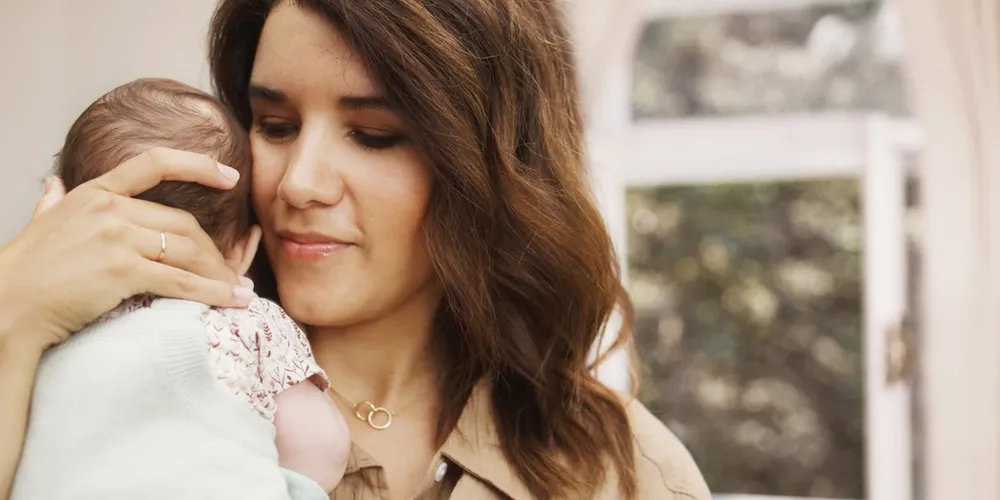Breast milk contains all of the essential vitamins, trace elements, nutrients and minerals needed for the first few months of baby’s life. The antibodies in breast milk also help to strengthen baby’s immune system. Women are not always willing or able to breastfeed, however. There are a variety of reasons why many families combine breastfeeding with bottle feeding and baby formula. Read on to find out why you should only feed your baby pre-formula or stage 1 infant formula in these cases, as well as how to prepare a bottle correctly!
Types of milk: The optimal formula for every need
The first formula is most like the mother's milk in terms of composition. Just like breast milk, pre-formula only contains lactose, has a lower protein content, and a better fatty acid composition. Stage 1 formula may also contain an additional, possibly lower quality carbohydrate source. You can give both types of formula to your baby throughout the entire first year of his or her life.
What is the best way to prepare a bottle of milk?
Correct preparation of a bottle is important for babies because the immune and digestive systems are not fully developed yet. For example, "good" intestinal bacteria responsible for digestion are missing at this stage of life. Due to the fact that some antibodies are still lacking, careful hygiene is essential to avoid harming your baby's health. Here are some tips:
1. Keep a clean bottle ready
Only use sterilized bottles for the first few months. It is best to always have clean bottles on hand so that your little one does not have to go hungry (and maybe cry) for too long. MAM bottles can be sterilized in a few different ways: in boiling water, using an electric or microwave steam sterilizer, or in the microwave with no added parts. The MAM Easy Start™ Anti-Colic bottle has an innovative self-sterilizing function that makes it possible to sterilize the bottle in the microwave in three minutes by just adding water.

2. Follow the instructions on the packaging
The method of preparation and in particular the quantity can vary depending on the baby formula and the manufacturer. It is therefore best to follow the instructions on the packaging during preparation.
3. Use boiled water
Boiling kills dangerous germs that may be present in the water, as well as in pipes and tanks. Warm water from the faucet is particularly prone to contamination with bacteria. If you are unsure whether the water from your faucet is suitable for preparing a bottle feed, ask your local water supplier.
Important: let the water cool down a little after boiling and check the temperature, e.g., with a thermometer, before adding it to the bottle. You will find precise information on the correct water temperature on the formula packaging.
4. Stir thoroughly
Make sure that the heat is evenly distributed after warming and check the temperature again before feeding – e.g., against the inside of your wrist or with a thermometer. The ideal temperature is 96-98°F, because this corresponds to body temperature. The milk should never be too hot! This is important in order to avoid scalding your baby, but also because valuable fats are destroyed at 104°F.
5. Create a pleasant environment
A relaxed atmosphere also ensures a calmer drinking flow – and that in turn helps to prevent too much air from getting into your baby's tummy and your little one suffering from unnecessary gas. It is best to allow plenty of time and pause every now and then during feeding to prevent choking and spit up.
6. Wind your baby
After feeding, always lay your baby over your shoulder for a while and gently rub up and down its back to burp your baby and allow any swallowed air to escape.
Tip: there are also special bottles that help prevent babies from swallowing air during feeding.
7. Bottle cleaning
Unscrew the bottle, separate and rinse all parts with water and mild detergent. You can also wash the parts of the bottle in the top compartment of the dishwasher. Only after washing the bottle should you sterilize it.
Tips for bottle feeding:
- Have measured portions of formula ready in case you need to prepare a feed quickly.
- If your baby doesn't finish a feed, pour the leftovers away. Germs and bacteria begin to multiply in warm milk after a short time.
- When out and about, we recommend taking a thermos flask with boiled drinking water or heated baby water with you in order to prepare bottle feeds on the go.
- And finally, the most important thing: skin and eye contact is significant for the parent-child relationship and for bonding. Make sure you look at your baby and cuddle and caress him or her while bottle feeding.




























